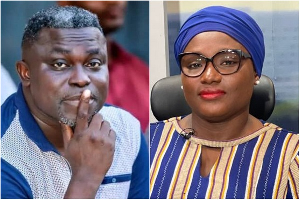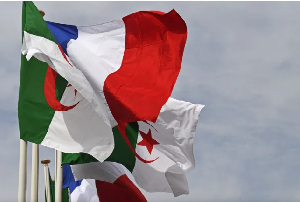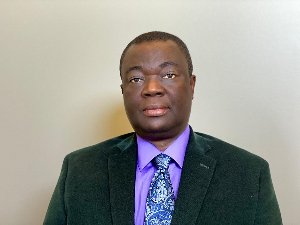Millennium Challenge Account ? Understanding The New U.S. Development Assistance Program.
PART I
BackgroundThe United States has a long history of extending a helping hand to the rest of the world especially in developing countries struggling to make a better life, recover from a disaster or striving to live in a free and democratic country. The history of U.S. foreign development assistance goes back to the Marshall Plan reconstruction of Europe after World War II and President Truman administration's famous Point Four Program. In 1961, President John F. Kennedy signed the Foreign Assistance Act into law and created by executive order the United States Agency for International Development (USAID), which has since been the lead agency in charge of U.S. foreign assistance. The purpose of this piece is to explain the opportunities and challenges of the Millennium Challenge Account - the new U.S. foreign development assistance program. The author is of the view that Ghana?s eligibility and selection is not by chance, but as a result of prudent management of the economy and adherence to the rule of law.
In March 2002 at the United Nations Financing for Development Conference in Monterrey, Mexico President George W. Bush called for a "new compact for global development", which links greater contributions from developed nations to greater responsibility from developing nations. The President proposed a concrete mechanism to implement this compact - the Millennium Challenge Account (MCA) which seeks to address the failure of current U.S. development assistance programs to meet their stated goals.
The problem
The United States is the largest bilateral donor to the developing world; in 2001, it contributed $10.9 billion (roughly the entire economic output of Kenya) in official development assistance (ODA) to developing countries. Most recipients of U.S. development aid are poorer now than they were before first receiving that aid. According to the Organization for Economic Co-operation and Development, the United States provided $167 billion to 156 developing countries from 1980 to 2000. But for the 97 for which reliable economic data for that period are available, the World Bank reports that median per capita gross domestic product (GDP) declined from $1,076 in 1980 to $994 in 2000. Traditional development assistance has been ineffective because it is often directed toward governments that embrace misguided policies, undermine economic development and to corrupt regimes that steal the money. For example, Nigeria - one of the world's most corrupt countries under a succession of dictators - received over $190 million in U.S. development assistance from 1980 to 2000. Per capita GDP in Nigeria today is $300 (World Bank, 2002). Directing more money to such countries only reinforces the policies that have retarded economic growth, exacerbating their predicament and increasing their dependence on international donors.How different and significant is the MCA?
Recognizing this problem, President Bush specified that the MCA would be "above and beyond existing aid" and, for the first time, would be distributed only to developing countries that "govern justly, invest in their people and encourage economic freedom." The MCA will not replace existing development assistance programs or subtract from their budgets. However, it promises to bring about the most fundamental change to U.S foreign assistance policy since President Kennedy introduced the Peace Corps and USAID in the 1960s. The significance of this new development finance initiative lies in its scale: the $5 billion annual budget represents a 50 percent increase over the $10 billion U.S. annual foreign aid budget in fiscal year 2002 and a near doubling in the amount on aid that focuses strictly on development objectives. In fact, the allocated amount of $5 billion is phased in over a three-year period: a $1.7 billion increase in fiscal year (FY) 2004, $3.3 billion in FY 2005, and the full $5 billion in FY 2006 to fund the MCA. As a separate and distinct entity, the MCA is essentially an experimental program that attempts to learn from past mistakes and explore new strategies to improve the effectiveness of future development aid programs. Perhaps even more important than its size, however, is that the MCA comes with the opportunity to improve significantly the allocation and delivery of U.S. foreign assistance because it differs from current development assistance programs in four critical ways (Radelet, 2003). First, it is more focused and has more clearly defined objectives, aimed solely at supporting economic growth and development. Second, it will provide assistance to only a select group of low-income countries that are implementing sound development objectives, thus making the program more targeted and also creating the incentives for others to adopt sound development policies. Third, MCA by its objective and design reduces the bureaucratic and administrative costs associated with other aid programs to developing countries. The establishment of the Millennium Challenge Corporation (MCC) by the U.S. government and special implementing agencies in the recipient countries to administer the program will help to cut down the red tape in the existing bureaucracy.How the MCA works
The MCC develops the criteria and methodology for selecting recipient countries. This process is divided into four main steps; selection of candidate countries, selection of eligible countries, the compact proposal stage, and the implementation and evaluation stage. A candidate country is one which meets the criteria which judge the economic standing of low income countries. Countries are selected based on 16 specific criteria (see table) which emanate from President Bush?s three broad categories: ruling justly, investing in people and economic freedom. Countries must score above the median (measured against all broadly eligible countries) on half or more of the indicators in each of the three groups to qualify for the MCA. That is, they must surpass the median in three of the six "ruling justly" indicators, two of the four "investing in people" indicators, and three of the six "promoting economic freedom" indicators. In addition, a country must score above the median on corruption, regardless of how well it does on all the other indicators. So far 23 counties have been selected to benefit from the fund, including Ghana and 11 other African countries. The criteria used for the selection process are listed in the below table.
Ruling Justly Investing in People Promoting Economic Freedom
1. Civil Liberties
2. Political Rights
3. Voice and Accountability
4. Government Effectiveness
5. Rule of Law
6. Control of Corruption
7. Public Expenditures in Health as % of GDP
8. Immunization Rates
9. Public Primary Education Spending as % of GDP
10. Primary Education Completion Rate
11. Country Credit Rating
12. 1-year Consumer Price Inflation
13. Fiscal Policy
14. Trade Policy
15. Regulatory Quality
16. Days to Start a Business
Source: www.mca.gov
Ghana?s Results
Ghana scored quite well compared to other countries in its category (with a per capita income of $1,415 or less). In the ruling justly category, there are six indicators covering (1) civil liberties, (2) political rights, (3) voice and accountability, (4) government effectiveness, (5) rule of law, and (6) control of corruption. In all six of these indicators Ghana scored well above the median, and it scored particularly high on government effectiveness, which is an aggregate index of such items as the provision of quality public services and competent and independent civil servants. This is testimony to Ghana?s efforts to put in place a permanent system of democratic and effective governance and adherence to the rule of law.In the investing in people category, there are four indicators: (1) public expenditure on health as a percent of GDP, (2) immunization rate for DPT and measles, (3) total public expenditure on primary education as a percent of GDP, and (4) the primary completion rate. Here again Ghana scored very well compared to the other MCA candidates, demonstrating the country?s commitment to improving the lives of its people.
For the promoting economic freedom category, the six indicators are regulatory quality, country credit rating, days to start a business, trade policy, inflation, and fiscal policy. For Ghana, the scores on these indicators have not been as robust as in the other two categories though the government has taken steps to address weaknesses. For example, while the authorities have made progress in reducing the number of days to start a business (down from 129 days in 2002 to 85 days in 2003), this figure is still very high and is a true deterrent from doing business in Ghana. The government has developed a private sector development strategy that will serve as the basis for improvements. Low deficits and prudent fiscal policy are keystones of the MCA criteria. While spending and inflation levels in Ghana have historically been quite volatile, the government has done a good job of maintaining fiscal discipline, and they must be commended for this significant achievement. Inflation has come down considerably from its high point of about 70% when the Kufuor administration assumed office, and now is expected to be in the single digits by year-end. Prudent implementation of fiscal and monetary policies no doubt played a strong part in Ghana receiving a B+ rating from Standard & Poors. The government has continued to maintain fiscal discipline even in the 2004 election year, thus reversing a long and destabilizing trend in Ghana.
PART II
The CompactThe signing of the compact is the most crucial stage in the Millennium Challenge Account. Completion of the compact requirement signifies the release of finds for the program. Countries which have then been designated as eligible enter the compact proposal stage. Eligible countries are then tasked with submitting proposals on projects for funding. The proposals must demonstrate how it will meet the general goal of reducing poverty through economic growth and development. If the proposed project by an eligible country is over many years, then the amount needed each year must be specified. As part of its focused nature of the MCA any proposal cannot go towards military assistance and any action that damages the environment. The proposals are then sent to the Board for evaluation.
An eligible country which has had its proposal accepted then enters into a compact with the United States government. The country will receive funds in the form of monetary grants as specified in their proposal. The United States and the compact country are now bound in a contract to deliver the aid, and the results specified in the compact. If the compact country fails to meet benchmarks specified, the U.S. has the reserved right to pull its funding to that country. As at March 2006, nine (9) countries, including Benin and Mali had signed their compact with the United States government.
The Threshold Program
There is also a Threshold Program designed to assist countries that are on the ?threshold,? meaning they have not yet qualified for MCA compact funding, but have demonstrated a significant commitment to improve their performance on the eligibility criteria for MCA compact funding. Threshold Program assistance is used to help selected countries address the specific policy weaknesses indicated by their scores on the MCC policy indicators. The Board of Directors of the MCC selects countries as eligible for Threshold Program assistance based on their demonstrated commitment to meet the eligibility criteria for MCA Compact funding, including improvement of their scores on the sixteen policy indicators, based on public information, in three general categories: ruling justly, investing in people, and encouraging economic freedom.In selecting countries for the fiscal year 2004 Threshold Program for example, the Board of Directors favored countries that needed to improve on two or fewer indicators to qualify under the eligibility criteria for MCA Compact funding; i.e., by improving on two or fewer indicators the country would score above the median on half of the indicators in each policy category, would score above the median on the corruption indicator and would not score substantially below the median on any indicator. In addition, the Board of Directors reviewed whether countries that passed this screen also demonstrated a commitment to undertake policy reforms that would result in improvements in deficient MCC policy indicators. When selecting countries for fiscal years 2005 and 2006, the Board of Directors reviewed the countries' performance on the indicators and their ability to undertake reform. On July 22, 2005, Burkina Faso became the first threshold country to be approved for MCA compact funding. Burkina Faso was awarded $12.9 million for its Threshold Country Plan, which is designed to improve girls' primary education completion rates. Malawi has also presented a successful Threshold Country Plan and on September 23, 2005, was awarded $20.9 million to fund its anti-corruption efforts.
Is the MCA a Dependency theory or Modernization theory strategy? The goal of MCA, which takes inspiration from W.W. Rostow, an early development economist, is to reduce poverty by significantly increasing economic growth trajectory of recipient countries. This requires an emphasis of investments that raise the productive potential of a country?s citizens and firms, and help to integrate its economy into a global product and capital markets. Is MCA another growth and modernization strategy, which has proved unworkable in developing countries, and thus received condemnation from dependency theorists? The MCA, as it is currently designed and implemented, takes into consideration some concerns of dependency theory as it strengthens the internal conditions of these countries by supporting agricultural development, education, health, enterprise and private sector development, governance, trade and capacity building.
For instance, Armenia, which recently signed a $235 million MCA compact with the U.S. government, is investing over 62 percent ($146 million) of the amount only on its Irrigated Agriculture Project, and the remaining $67million on its Rural Road Rehabilitation Project. These are strategic investments into agriculture and rural transportation which are intended to promote economic growth and development. The program is expected to have a direct impact on approximately 750,000 people, or 75 percent of its rural dwellers, increasing their annual incomes by an estimated $36 million in 2010 and over $113 in 2015. By 2013, Armenia?s rural poverty rate is projected to drop by 5 percentage points as a result of the program.
One important distinctive feature of the MCA not found in other development assistance programs is that it serves as a reward for good policies of recipient countries. As described above, countries have been selected to receive assistance based on their performance. This provides a morale booster for other developing nations to adopt and implement good policies in an effort to qualify and become MCA recipient country.
Unlike other development assistance programs, MCA recognizes the fact that development must come from the local people and not imposed by people from outside; and as such countries that receive MCA assistance will be responsible for identifying the greatest barriers to their own development and ensuring civil society participation. This could be a break through in the international development because in the past development assistance programs have sought to impose policies and programs on recipient countries without taking into consideration the needs and aspirations of the local people.
Ghana?s Proposal
In July 2006, Ghana is expected to sign a record $500 million compact with the MCC. Ghana has already submitted a compact proposal to the MCC, and on August 11, 2005 the US signed a $3 million grant agreement with Ghana to assist in compact development. Ghana's compact proposal (which has not been made public yet) aims to make Ghana a world-class exporter of high value fruit and vegetables through the creation of a strong investment climate. In order to achieve this, the proposal recommends efforts to improve roads, irrigation, training, and access to finance.It is great to know that Ghana has already submitted its ambitious proposal to the MCC. However, it is instructive to mention here that the submission of the proposal does not necessarily make the compact a done deal. The proposal must be detailed and comprehensive. It must demonstrate how each activity or project will promote economic growth. Economic rates of return must be calculated to determine the real impact and the number of people in the country who will be the direct beneficiaries. Ghana?s proposal is expected to directly benefit about three million rural dwellers and is expected to cut down considerably the poverty rate.
Monitoring and Evaluation
The $500 million compact funding will be released in installments over a five year period even after the compact has been signed. After the release of the funds for the first year, the subsequent release would be based on the performance of the first year. It is worthy of note here that any change in the implementation process, per the approved proposal, could lead to an unfortunate situation of the compact funds being redrawn by the MCC. This means that program monitoring and evaluation would be a crucial element in the implementation process of the MCA. Without a strong monitoring and evaluation capacity, the program in the recipient country, and Ghana for that matter, is doomed to fail. Effective monitoring and evaluation is critical for keeping funded programs on track and meeting their goals, guiding the allocation of resources toward successful activities and away from failures and ensuring that the lessons learned from the first year activities, both successes and failures, inform the design of projects for subsequent years and even different development projects and programs.Two types of monitoring and evaluation are essential: financial accountability and project accountability. Financial accountability should ensure that funds are spent where they are supposed to be, the project remains within budget, regulations on procurement and payment are followed, and funds are not embezzled. Project accountability focuses on attaining specified benchmarks, such as constructing a certain number of roads, training a certain number of teachers, building a designated number of schools, planting a certain number of crops, or increasing a school?s graduation rate. Monitoring and evaluation must be incorporated into projects and programs from the outset, not added as an afterthought halfway through the process. Both internal and external audit will be needed to ensure monitor compliance and high standards.
Apart from the Millennium Challenge Account Initiative (MCAA), the new government of Ghana agency set up by Parliament to administer the MCA, this program will need the support of other departments and agencies to see to its successful implementation. To make sure that the projects are executed according to plan, it is important that all government agencies that have a role to play must be seen as an integral part of the program. It is recommended that an inter-agency oversight committee - comprising the heads of all relevant state agencies ? be formed and seek to the compliance and effective implementation of the projects. This is against the background that failure on the part of these agencies to play its role effectively could lead to the failure of the program.
Conclusion
In spite of the good intent of the MCA, the program has some issues that have to be addressed. One potential problem with the MCA is that, given the fact that countries are selected based on good policies; there is a tendency to select countries that are already doing well, thus neglecting the poor in very poor countries who are considered to have bad policies. When this happens then the original goal of MCA will be defeated. Also the fact that MCA serves as reward for good policies provides a good ground for the MCA officials to influence the policies of recipient countries. After all what are good policies? And who decides what good policies are? Officials of Millennium Challenge Corporation (MCC) therefore have great incentive to impose what they believe are good policies to the recipient countries which may not necessarily help them in their development process. This notwithstanding, the MCA has come to stay and it will address most of the difficulties and challenges facing traditional development assistance.

Views expressed by the author(s) do not necessarily reflect those of GhanaHomePage.














